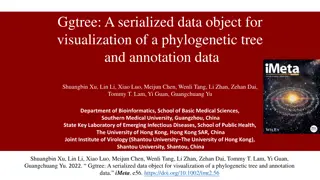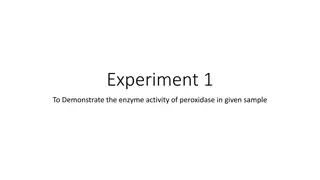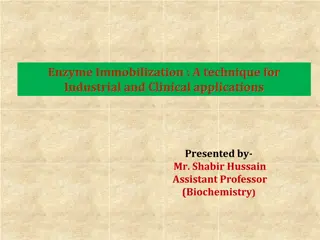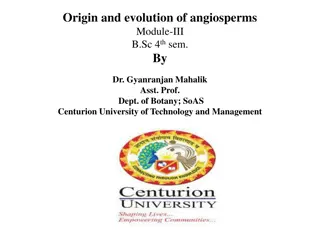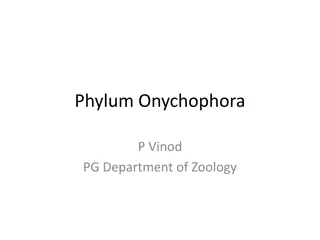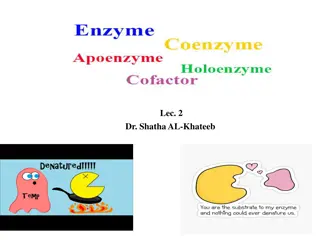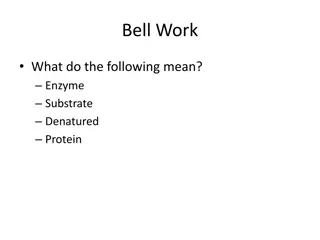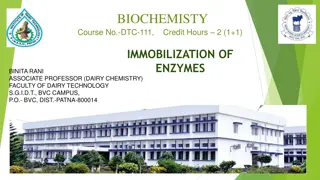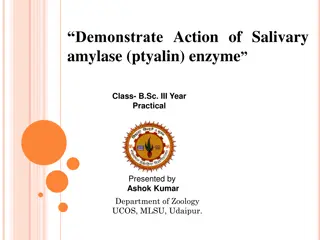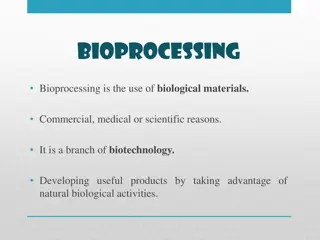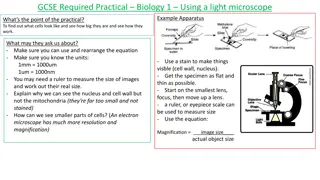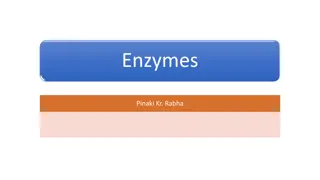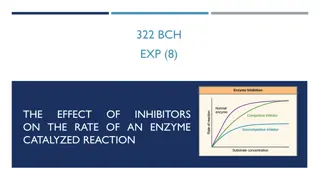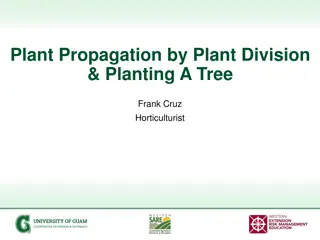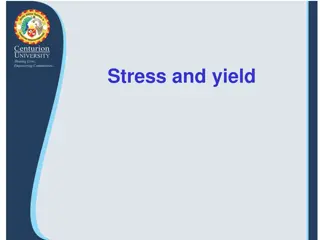Plant Enzyme Activities and Phylogenetic Analysis
The content discusses the alignment of various plant enzyme amino acid sequences, including DcLCYB1, DcLCYB2, and DcLCYE, among different inbred lines. It also explores the construction of DcLCYs for enzyme activities using an E. coli complementation assay. The phylogenetic relationship between DcLCYB2 and other homologs is highlighted alongside amino acid sequence alignments. Visual aids such as images and vector maps are provided to aid in understanding the research findings.
Download Presentation

Please find below an Image/Link to download the presentation.
The content on the website is provided AS IS for your information and personal use only. It may not be sold, licensed, or shared on other websites without obtaining consent from the author. Download presentation by click this link. If you encounter any issues during the download, it is possible that the publisher has removed the file from their server.
E N D
Presentation Transcript
(a) Daucus carota Carica papaya Citrus maxima Solanum lycopersicum Crocus sativus Daucus carota Carica papaya Citrus maxima Solanum lycopersicum Crocus sativus Daucus carota Carica papaya Citrus maxima Solanum lycopersicum Crocus sativus Daucus carota Carica papaya Citrus maxima Solanum lycopersicum Crocus sativus Daucus carota Carica papaya Citrus maxima Solanum lycopersicum Crocus sativus Daucus carota Carica papaya Citrus maxima Solanum lycopersicum Crocus sativus Daucus carota Carica papaya Citrus maxima Solanum lycopersicum Crocus sativus Daucus carota Carica papaya Citrus maxima Solanum lycopersicum Crocus sativus Daucus carota Carica papaya Citrus maxima Solanum lycopersicum Crocus sativus 0.18 NP_001316108.1 capsanthin/capsorubin synthase chromoplastic-like Daucus carota subsp. sativus 0.05 (b) 0.18 0.18 NP_001316108.1 capsanthin/capsorubin synthase chromoplastic-like Daucus carota subsp. sativus Daucus carota NP_001234445.2 neoxanthin synthase chloroplastic Solanum lycopersicum 0.03 0.05 0.13 0.18 NP_001234445.2 neoxanthin synthase chloroplastic Solanum lycopersicum Solanum lycopersicum AJT59426.1 LCY2B Citrus maxima 0.09 0.03 0.17 0.13 ACR61334.1 lycopene beta-cyclase 2 Carica papaya AJT59426.1 LCY2B Citrus maxima Citrus maxima 0.09 0.17 ACR61334.1 lycopene beta-cyclase 2 Carica papaya Carica papaya ADA82241.1 chromoplast-specific lycopene beta cyclase Crocus sativus 0.35 ADA82241.1 chromoplast-specific lycopene beta cyclase Crocus sativus Crocus sativus 0.35 0.050 0.050 Supplemental Figure 1. Multiple sequence alignment and phylogenetic tree between DcLCYB2 and LCYB2 homologs among plant species. (a) Amino acid sequence alignment of DcLCYB2 with LCYB2 homologs from various plant species. Daucus carota; NP_001316108.1, Carica papaya; ACR61334.1, Citrus maxima; AJT59426.1, Solanum lycopersicum; NP_001234445.2, and Crocus sativus; ADA82241.1. The background colors showed identity and similarity among species (black : identity = 100 %, gray : similarity > 60 %). (b) The phylogenetic distance between DcLCYB2 and other homologs. 0.050
Supplemental Figure 2. Alignment of DcLCYB1 amino acid sequences among D802, D904, GD2002 and GD2003 inbred lines.
D802 D904 GD2002 GD2003 D802 D904 GD2002 GD2003 D802 D904 GD2002 GD2003 D802 D904 GD2002 GD2003 D802 D904 GD2002 GD2003 D802 D904 GD2002 GD2003 D802 D904 GD2002 GD2003 D802 D904 GD2002 GD2003 D802 D904 GD2002 GD2003 Supplemental Figure 3. Alignment of DcLCYB2 amino acid sequences among D802, D904, Gd2002 and GD2003 inbred lines.
Supplemental Figure 4. Alignment of DcLCYE amino acid sequences among D802, D904, GD2002 and GD2003 inbred lines.
DcLCYB1/LCYB2/LCYE (a) (b) XhoI SmaI crtE crtI crtB AtLCYB lac promoter lac pro tet pro pATLCYbsk pAC-LYC AmpR CmR T7 pro Cat pro Supplemental Figure 5. Constructions of DcLCYs for the enzyme activities using E. coli complementation assay. (a and b) The vector map of pAC-LYC (a) and pATLCYBsk (b). DcLCYB1, LCYB2 and LCYE were cloned into the sites of AtLCYB using smaI and xhoI restriction enzyme (b).




